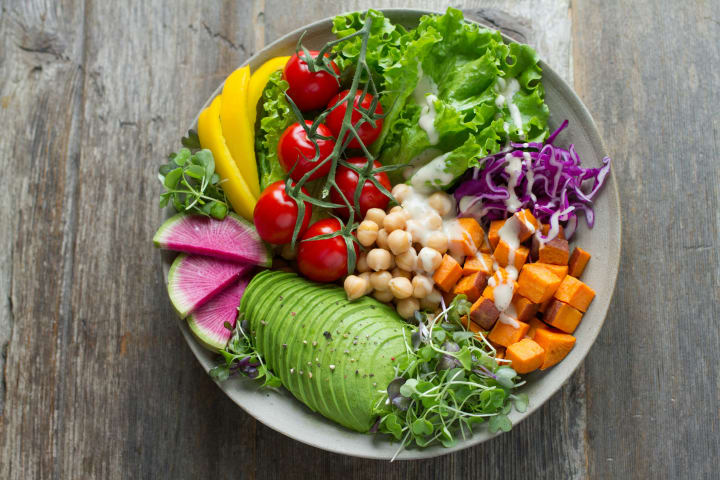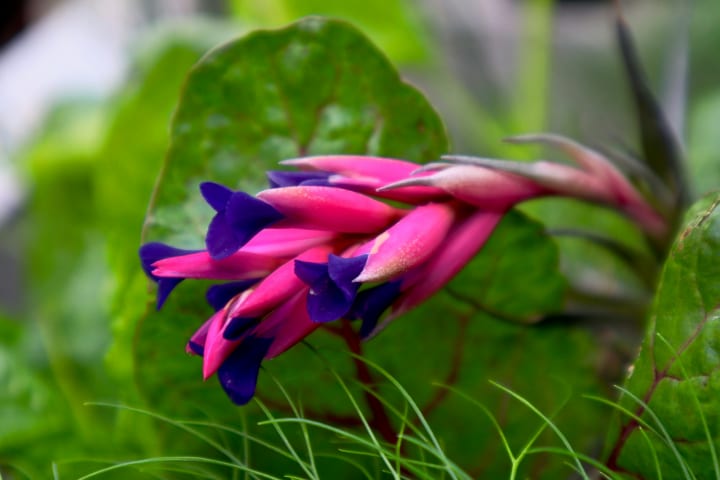THE MOST EFFECTIVE METHOD TO SAVE TIME GARDENING IN THE SUMMER
March is a wonderful time of massed flowers

March is a wonderful time of massed flowers, scrumptious vegetables, and aromatic herbs up in temperatures that encourage everyone to get outside and enjoy all that nature has to offer before summer begins with heat, dust, and sociated miseries is in stone.
Despite having such a diverse climate, one does not look forward to long hours of gardening in summer – except for those residing in the far north of the country. To be honest, it is quite the reverse.
Therefore, before the summer arrives this season, let’s take a long hard look at how to reduce garden maintenance – and the use of precious water–in advance. With foresight and effort, it will enable us to make changes now which will save tremendous effort – in terms of sweat and tears – in the heat and humidity to come.
To start, consider implementing a drip irrigation system that conserves water by directing it precisely where it is needed, reducing evaporation and runoff. Mulching around plants can also help retain soil moisture and suppress weeds, cutting down on both water usage and weeding time.
Planting drought-resistant species suited to your local climate can further reduce the need for frequent watering and maintenance. Additionally, incorporating native plants, which are well-adapted to local conditions, can significantly lower water requirements and overall care.
By planning and adjusting our gardening practices in march, we set the stage for a more sustainable and enjoyable garden throughout the challenging summer months. These proactive steps not only benefit our gardens but also contribute to water conservation efforts, ensuring a greener and more resilient environment for all.
TIPS TO MAKE GARDENING MORE EFFECTIVE
Switch over from having lots of small pots/containers to having fewer but larger ones. Pots need a lot of upkeep, especially during the hot weather.
Larger containers mean a large volume of soil/compost which retains water longer than their smaller counterparts. And so does not need watering as often.
Replace delicate plants – those that need extra – special care during the heat – with tough indigenous ones that will tolerate whatever the weather decides to do.
Wherever possible, change over from water-seeding seasonal flowers to those plants can be found at local nurseries.
Do not try maintain shade-loving plants in a sunny spot or sun-lovers in the shade. Providing the correct growing conditionals for individual plant species savers endless toil and teras.
If possible, make preparations to erect seasonal shade – in the form of specialized netting/bamboo grill, etc. – in parts of the garden or on a rooftop which are going to need it. The same goes for wind protection too.
Examine feasible options for rainwater harvest and storage during the summer monsoons. Water is an increasingly precious commodity and should never be wasted.
Switching over from having lots of small pots and containers to having fewer but larger ones can significantly reduce garden upkeep, especially during hot weather. Large containers mean a greater volume of soil or compost, which retains water longer than their smaller counterparts, thus requiring less frequent watering. This simple change can save time and effort in maintaining your garden.
Additionally, replacing delicate plants that need extra care during the heat with tough indigenous ones that can tolerate various weather conditions is a smart move. Indigenous plants are well-adapted to the local climate and often require less water and maintenance. Wherever possible, switch from water-seeding season flowers to those plants that can be easily found at local nurseries. These nursery plants are typically hardier and better suited to the local environment.
It’s also crucial to plant species in their preferred growing conditions. Do not try to maintain shade-loving plants in a sunny spot or sun-lovers in the shade. Providing the correct growing conditions for individual plant species' location reduces stress on the plants and the gardener alike.
If possible, make preparations to erect seasonal shade in the form of specialized netting or bamboo grills in parts of the garden or on the rooftops that are going to need it. The same goes for wind protection, which can help prevent damage and stress to plants during harsh weather conditions.
Examine feasible options for rainwater harvesting and storage during the summer monsoons. Water is an increasingly precious commodity and should never be wasted. Setting up a rainwater harvesting system and providing an s sustainable water source for your garden, reducing dependence on municipal water supplies and conserving this vital resource. By implementing these strategies, you can enjoy a thriving garden with less effort and more efficiency. Even during the challenging summer months.
CHECKLIST FOR MARCH
There’s plenty of growth and do this month. Below is a list.
IN THE VEGETABLE GARDEN
One vegetable to absolutely sow march is the luscious cherry tomato – plant this is as many colours as you can get hold of such as yellow, black, pink, and basic red. Don’t forget that cherry tomatoes tend to be far more ‘weatherproof’ than larger fruiting varieties and often crop for a longer period. Make sure to find space for more ladyfingers, cucumbers, aubergines, lots of different kinds of lettuce, radish, Swiss chard/leaf beet, capsicums, pimentos, and all types of chilies (long, small, hot, and mild).
Other vegetables you can grow are climbing beans, seasonal cabbages, cauliflowers, tinda, Loki, tori, kukri, courgette/zucchini, pumpkins, squash, spaghetti squash, bottle gourds, green onions and potatoes. You can also go for Cuca melon – a delightfully crunchy, kind of limy-miniature watermelon, that grows in bunches and is delicious.
A delightfully crunchy, kind of limy-miniature watermelon, that grows in bunches and is delicious. To make the most of your vegetable garden, ensure you rotate crops to prevent soil depletion and reduce the risk of pests. Companion planting, like growing basil alongside tomatoes, can improve flavor and deter pests naturally. Additionally, enriching your soil with compost and organic matter will provide the necessary nutrients for robust growth. Regular watering, mulching, and weeding are essential to maintain plant health and optimize yields. As your garden flourishes, you’ll enjoy the satisfaction of harvesting fresh, home-grown produce throughout the growing season.
IN THE HERB GARDEN
It’s always a good time to plan herbs. This month, aim t grow coriander, basil, borage, nasturtiums of all colours, calendula, lemongrass, lemon balm, phenanthroline, savory, chives, garlic chives, Agastache – licoricey, blue is excellent – and chamomile (which can be used for teas, lotions, and potions). You may also like to grow some ginger. The easiest way to do so is to plant pieces of root which are already developing buds and can be easily found in the bazaar. Thyme, oregano, and marjoram can all still be grown but a shady spot is necessary.
Additionally, consider adding mint to your herb garden, its refreshing flavour is perfect for teas and culinary dishes, but be sure to contain it as it can spread aggressively. Rosemary, with its fragrant needles, it another great choice and thrives in well-drained soil. For a touch of the exotic, try growing some Vietnamese coriander or Thai basil, both of which add unique flavors to your culinary repertoire. Regular pruning of your herbs encourages bushier growth and prevents them from becoming too leggy. Harvesting herbs frequently ensure a continuous supply of fresh flavours for your kitchen, while also keeping the plants healthy and productive. Enjoy the sensory delight and practical benefits of a thriving herb garden all year round.
For optimal growth, ensure Chinese gooseberries have a sunny spot and well-draining soil. Sweet melons and watermelons thrive in warm temperatures; planting them after the last frost is crucial for success.
Prepare your soil with plenty of organic matter to support their rapid growth. Pineapples, let it dry for a few days, and then plant it in a pot with well-draining soil. Water sparingly but regularly, and be patient, as pineapples can take a couple of years to produce fruit. These tropical additions will add variety and excitement to your garden, rewarding you with delicious, home-grown produce.
Planting them after the last frost is crucial for success. Prepare your soil with plenty of organic matter to support their rapid growth. Pineapples are surprisingly easy to propagate: simply cut off the crown of a fresh pineapple, and let it dry for a few days.
They are relatively low-maintenance and produce bountiful yields. Blueberries can be a wonderful addition too. Provided you gave acidic soil. Regular pruning and proper mulching will help maintain healthy growth and maximize your harvest. Enjoy the diverse flavors and rewarding experience of cultivating a fruitful garden.

IN THE FRUIT GARDEN
Chinese gooseberries grow rapidly from seed and fruit in a matter of months. Sweet melons and watermelons can both be sown from the middle of the month. This is also the perfect time to start off pineapples – propagated from fresh pineapple top – so give this a go as well.
For optimal growth, ensure Chinese gooseberries have a sunny spot and well-draining soil. Sweet melons and watermelons thrive in warm temperatures;
Planting them after the last frost is crucial for success. Prepare your soil with plenty of organic matter to support their rapid growth. Pineapples are surprisingly easy to propagate: simply cut off the crown of fresh pineapple, let it dry for a few days, and then plant it in a pot with well-drain soil. Water sparingly but regularly, and be patient, as pineapples can take a couple of years to produce fruit. Additionally, consider planting grapes, which thrive in sunny conditions and well-drained soil, offering a delightful bounty when mature. Figs are another excellent choice for warm climates, producing sweet fruit and requiring minimal care. Mulching and consistent watering will help these plants flourish, providing you with a diverse and rewarding fruit garden. Enjoy the process of nurturing these plants and the delicious fruits of your labour.

IN THE FLOWER GARDEN
Set you garden, patio, balcony or rooftop ablaze this summer by sowing as many zinnia seeds as you can possibly make room for-from dwarf to tall. Single to double-doubles and in shades from lime green to fire engine red. Bedazzle yourself and all others who lay eyes on your magnificent creation.
If an overdose of ‘zinnias’ isn’t to your taste then opt for massed sunflowers, again in every available size and colour to make the summer months really bloom. And if neither of the aforementioned is your ‘thing’. There are amaranths, celosia, coreopsis, portulaca, petunias, tagetes, marigolds, verbena gomphrena, and many other summer annuals to be inventive with intentions.
For a touch of elegance, add cosmos, which offer delicate, daisy-like flowers in range of colours. Planting morning glories can also enhance
vertical space with their climbing vines and vibrant blooms. Incorporating fragment flowers such as sweet peas or lavender can add an aromatic dimension to your garden. Regular deadheading will encourage continuous blooming. Keeping your garden vibrant throughout the summer. With careful planning and a bit of creativity, your flower garden can become a stunning, multi-sensory paradise.
FLOWER OF THE MONTH
Tacoma grandiflora, commonly known as Trumpet vine, is a flower to grows in March. This incredibly durable climate bursts into glorious bloom on and off from early spring through to autumn but ends up smothering itself in flower throughout the long. Hot summer months.
A fast-growing perennial climber, it can attain a height of 30 feet and more but is easy to control with fairly regular pruning of unwanted new growth. The trumpet-shaped flowers are a lovely terracotta orange shade and closely related species have equally striking yellow or pink blooms.
Easily propagated from suckers or cuttings. The plant is suitable in most soil types as long as there is decent drainage. It flourishes in the full sun and light shade and, once established, needs little water. It’s a useful climber for quickly covering walls. Garages and pergolas.
The trumpet vine not only adds a vibrant splash of colour to your garden but also attracts hummingbirds and butterflies, enhancing the ecological beauty of your outdoor space. Regular pruning will keep the plan in check and encourage more prolific blooming, making it a standout feature in any garden.
About the Creator
Mirza Afzal Baig
I'm Mirza Afzal Baig, and I'm here to sprinkle a bit of magic on your reading experience. As an avid explorer of words, I've embarked on a journey to share stories, insights, and perspectives that will captivate your imagination.
Enjoyed the story? Support the Creator.
Subscribe for free to receive all their stories in your feed. You could also pledge your support or give them a one-off tip, letting them know you appreciate their work.






Comments
There are no comments for this story
Be the first to respond and start the conversation.